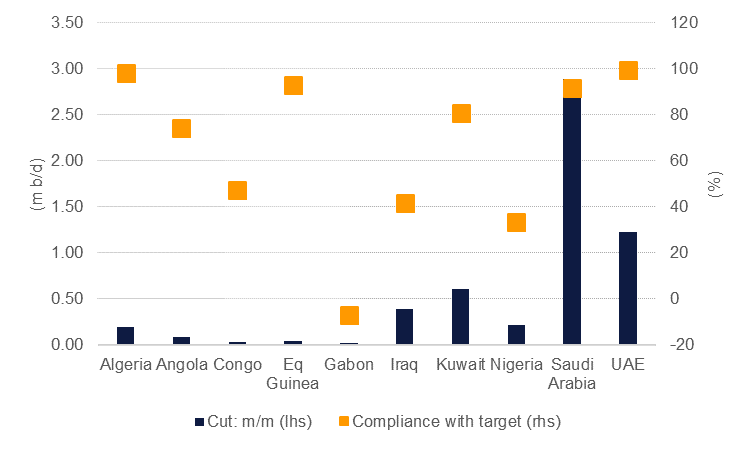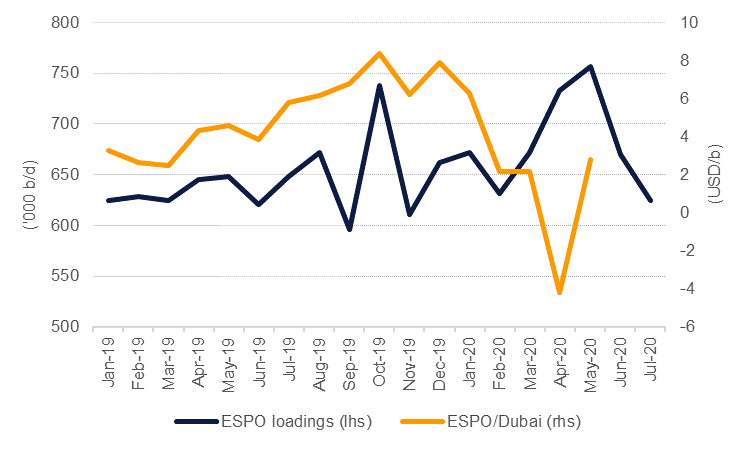
OPEC recorded a strong level of compliance with its production cut target for May, the first month of the OPEC+ agreement to remove nearly 10m b/d from oil markets. Total production from the 10 OPEC countries that are part of the deal fell to 20.6m b/d from a baseline of 26.68m b/d. At an individual level the usual pattern of strong compliance from producers in the GCC held true with Saudi Arabia hitting nearly 92% of its target cut and the UAE achieving essentially 100%. Both countries, along with Kuwait, have pledged to cut additional volumes this month to further accelerate the process of rebalancing the oil market.
 Source: Bloomberg, Emirates NBD Research
Source: Bloomberg, Emirates NBD Research
However, both Iraq and Nigeria failed to hit even 50% of their targeted production cuts. Iraq recorded production of 4.2m b/d compared with an output target of around 3.6m b/d while Nigeria’s May production at 1.69m b/d compares with a target of 1.4m b/d. As ever is the case when OPEC implements a production cut strategy there are limited tools to enforce compliance aside from punishing unobservant members with higher production from others. However, that generally leads to weaker prices for all members and can be a self-defeating enforcement mechanism.
Data from the rest of OPEC+ has yet to be released but loading programmes for ESPO crude, a key Russian grade for the Asian market, show a considerable drop for June-July while premiums for Russian crude grades have risen in recent deals. Production also appears to be in decline in both Kazakhstan and Mexico, two of the other major members of OPEC+.
 Source: Bloomberg, Emirates NBD Research
Source: Bloomberg, Emirates NBD Research
OPEC+ is debating whether the deep level of cuts that were due to be in place for just May – June 2020 should be extended to keep inventories from widening out even more. The debate appears to be largely, again, between Saudi Arabia and Russia, the two countries whose oil market diplomacy will shape the trajectory for prices for the rest of the year. Russian oil companies have pressed the country’s leadership to stick to the schedule of gradually easing the deepest level of cuts and allow output to trickle higher for the rest of the year. But the sharp improvement in spot prices in the past month may encourage OPEC+ to keep deep cuts in place, particularly as production from market-oriented producers like the US or Canada is effectively in freefall.
Were OPEC members to extend the deeper cuts until the end of August the implications for oil output from the GCC economies would be sharp. Based on the OPEC+ agreement, Saudi production is set to decline by nearly 5% y/y in 2020 but cutting deeper for longer would push the trajectory to a near 8% drop, assuming Saudi Arabia kept output at its even lower than agreed level of around 7.5m b/d. We are hesitant though to assign much chance that prices would improve considerably beyond their current range of USD 30-40/b. OPEC cuts tend to reinforce the bottom of the market but demand improving steadily would be required to allow prices to move higher on a more sustained basis.